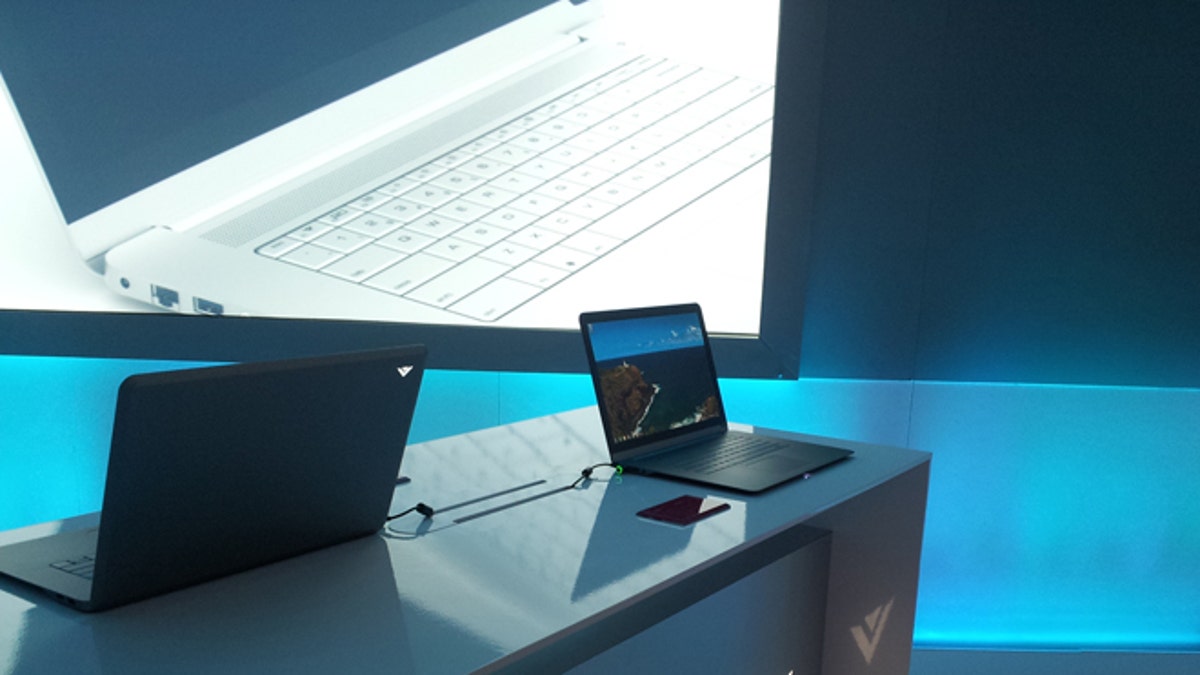
Spring is here -- and it's time to spring clean your computer. (FoxNews.com / Jeremy A. Kaplan)
Many folks bring themselves and their homes out of the winter doldrums with a frenzy of spring cleaning and organizing. One area of your house you might neglect, however, is your computer.
Fortunately, cleaning and de-cluttering your PC is easy to do and doesn’t take much time. It'll prolong the life of your machine and help you get more work done faster.
That means you can spend more time outside, enjoying the longer, warmer days!
Clean that hardware
Your PC has collected some dust bunnies since its last cleaning. These trap heat and shorten the life of your system.
There there's your keyboard, which probably has a fair amount of bread and potato chip crumbs lodged between the keys. Don't even get me started on the germs your keyboard, mouse and touchpad collect!
Time for some do-it-yourself detailing.
First, turn off your computer or laptop and unplug it. If your keyboard and mouse are wired, unplug them from the computer. If they're wireless, shut them off and remove the batteries.
A few blasts of compressed air should take care of any dust on the keyboard and debris stuck between keys. Next, swab your keyboard and mouse with bleach-free disinfecting wipes to remove grime. You can also use cotton swabs dipped in isopropyl alcohol for a deep clean between the keys.
For your monitor screen, use a soft, slightly damp lint-free cloth. Don't use cleaners that contain ammonia.
If you're confident enough to open up the inside of a PC desktop case, now's a good time to remove dust buildup on the case fans, air vents, motherboard and CPU heatsink and fan. On a laptop, blow compressed air into the intakes along the side.
Zap those viruses
In addition to compromising your privacy, spyware and viruses bog down your PC's performance.
Scan your machine with reputable anti-virus and anti-spyware programs to combat this threat. If you need anti-virus software and spyware remover, visit my Security Center for free programs. Run the scans and remove any threats that pop up.
Remember to update your security programs often so you can stay protected from emerging threats. Weekly scans help, too.
Free up and optimize hard disk space
Windows uses free hard disk space for extra memory. A hard drive that's nearly full will slow down your computer.
First, get rid of temporary Internet and Windows files with the free program CCleaner.
Two more free programs help. Grab Revo Uninstaller to thoroughly remove any programs you don't use anymore. Zap trial software and other unwanted bloatware with PC Decrapifier.
Still bumping up against your hard drive's storage limit? Consider moving your photo, video or music library to an external drive. Use a free disk-visualizing program such as WinDirStat to see what other applications and files are taking up the most space.
If your PC or laptop has a conventional hard drive - not a solid-state drive - it can benefit from defragmenting. In Start>>Control Panel, run Disk Defragmenter (Optimize Drives in Windows 8) to consolidate fragmented files and folders and speed up reading and writing to the disk. Also run the Error Checking utility, which scans the drive for bad sectors and file system errors.
Update Windows software
The second Tuesday of every month is sort of a holiday for Windows users. It's called Patch Tuesday, and it's the day Microsoft releases updates for Windows. Other tech companies often release patches to coincide with this date, too.
These updates help you keep drivers and service packs up to date. They also fix security holes in Windows and programs like Office and Internet Explorer, which hackers can exploit by sneaking malware onto your PC.
Go to Start>>Control Panel>>All Programs>>Windows Update. It will tell you what updates need to be installed on your computer. Make sure you click the "Check for updates" link to see if the computer is up to date.
If you haven't done so, turn on automatic updates so you get hassle-free protection in the future. You can do this by clicking "Change settings" and choosing "Install updates automatically" in the drop down menu.
Copyright 2013, WestStar Multimedia Entertainment. All rights reserved.
Kim Komando hosts the nation's largest talk radio show about consumer electronics, computers and the Internet. To get the podcast, watch the show or find the station nearest you, visit: www.komando.com/listen. To subscribe to Kim's free email newsletters, sign-up at: www.komando.com/newsletters.
